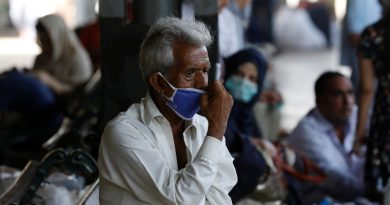Areas of the World Most Vulnerable to Climate Change
It doesn’t take a rocket scientist to appreciate the reality that the poorest countries, i.e. third world countries, have been suffering due to climate change for centuries. But this problem has definitely worsened over the last decades, and these poor nations are doomed to suffer even more in the years to come. If unity of the world to fix this crisis is not accomplished within the next several decades, there will be no question that the poor nations such as in Africa or Asia will not survive the droughts and diseases accompanying the climate change.
According to maplecroft.com’s “Climate Change Vulnerability Map 2010”, there are approximately 166 countries in serious danger from climate change. The five most vulnerable countries are Somalia, Haiti, Afghanistan, Sierra Leone, and Burundi, while the five least vulnerable countries are New Zealand, Canada, Japan, Finland and Norway. The United States seems to be somewhere in the middle, but currently one of the less vulnerable countries as illustrated on the maplecroft.com map. Besides, a country with resources has the opportunity to improve, if not resolve, this impending catastrophe. That being said, as it stands today, it will take nothing short of a miracle for the poorest nations of this world to survive the devastating climate change.
In a press release by Oxfam.org dated February 17, 2010, “retreating glaciers and more extreme weather could dangerously erode food security, livelihoods and even regional stability by 2050” in countries like Tajikistan. As affirmed in a report by Oxfam, Tajikistan, a mountainous, poverty-stricken Central Asian country, ranks 109th in the world for all greenhouse gas emissions, 129th in emissions per capita, and its people emit less than one ton of carbon dioxide per head per year as compared to approximately 20 tons per year per average North American household, which computation was explored at carbonfootprint.com. The report states that the country’s glaciers, which are mainly located in the Pamir Mountains that make up part of the Trans-Himalayan range, are retreating and could give way to greater water shortages and climate challenges in the wider region in the future. The distressing trauma of climate change has been harshly endured in the rural areas of Tajikistan in recent years, where 1.4 million people have already been suffering from famine.
Regrettably, food deprivation, clean water, and disease have always been issues in third world countries, though organizations like Oxfam have educated and helped many underdeveloped countries to help themselves. Tajikistan’s predicament emphasizes the international injustice of climate change, in view of the fact that, it is one of the countries least responsible for the greenhouse gas emissions that are causing climate change, but frighteningly, the long-term development and effect there are obvious and alarming, as they will be in most of the poorest countries.
Source by H. Winnig


